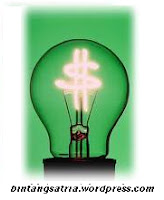Listrik (elektrik) or Electricity was not invented by any one person, but its modern day use is the result of the work of inventors, scientists, and researchers. The history of electricity begins not with electricity as we know it today, but with a more rudimentary form of the power which drives our world; static electricity. In order to fully understand electricity in our modern world, we first have to understand its history and the pioneers who dated back to as early as the ancient Greeks, and contemplate their work to harness the natural power of electricity and turn it into something truly useful to the average person.
1. Thales of Miletus
According to historical documents, the first known discovery of static electricity actually dates back to the 6th century BC, where Thales of Miletus realized rubbing a fur with some other object would cause the two objects to attract each other. Amazed by this phenomenon, he began to rub all kinds of objects together, but had the greatest success with amber; even to the point where he could get sparks to form.
2. Girolamo Cardano & William Gilber
In 1550s an Italian physicist, Girolamo Cardano, started doing work which involved electrical and magnetic forces. His follower, William Gilbert, began to expand on Cardano's theories in the 1600s.
3. Otto von Guericke
In 1660s, his invention of the first electrostatic generator paved the way for electricity to finally be recognized an actual field of study. This invention was followed by a variety of tests and which culminated in the realization that electricity can travel freely across a vacuum, that there are materials that act as conductors and others that act as insulators, and that two types of electricity exist (positive and negative).
4. Benjamin Franklin
In 1700s, Benjamin Franklin established the link between lightning and electricity during his famous kite in a thunderstorm experiment. anelectrical theory turned out to be a major turning point for the field, and is wholly responsible for our modern applications of electricity. Also during this time, the first capacitor was invented and it was finally determined that static electricity could be transformed into an electric current.
After that, the work of Franklin and his contemporaries gave rise to some of the biggest names in the electrical field. These men included Michael Faraday, Andre Ampere, Georg Simon Ohm, Luigi Galvani, and (perhaps the most well known) Alessandro Volta, all of which have their names permanently attached to some measure of electricity. Together, their work allowed for the creation of anodes, cathodes, and batteries.
Despite the major breakthroughs during the early nineteenth century, they were nothing compared to what was to come. Great minds like Nikola Tesla, Thomas Edison, Samuel Morse, Antonio Meucci, George Westinghouse, and Alexander Graham Bell worked to create some of the most incredible inventions to ever come from the study of electricity. These inventions included, respectively, the induction motor, the light bulb and a method of distributing electrical energy, the long-range telegraph, the telephone, the first electrically powered locomotive, and the founding of the widely successful telephone industry.
All of the research and study in th field of electricity finally culminated in the early twentieth century in what is called as the War of the Currents between Edison, Westinghouse, and Tesla. The three men battled for the public support of either direct current (DC) power proposed by Edison and alternating current (AC) proposed by Westinghouse and supported by Tesla. Eventually, it was determined that both types of currents should be used, but in different sectors. Although AC currently dominates, they are both still in use today.
We should thank them for what we get to day.
loading...

